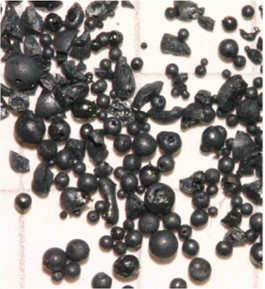MSWI
MSWI, Melt-Structure-Water Interactions during Severe Accidents in LWRs: this project delivers findings about the complex processes in severe accidents, especially in boiling water reactors; these findings are then used as the basis for modelling with maximum accuracy. The general focus of the work is on understanding (as far as possible) the interaction of the processes in a core melt-down, and on the applicability of the results. For example, this work enables more reliable quantifications of the risk of a major release of radioactive substances. Such quantifications are important for decisions on technical back-fitting measures and on the optimisation of accident control strategies and emergency preparedness. The following results were achieved in the four areas covered by the project in 2009:
- Coolability of core melt-down (corium) in the RPV and accident control strategies (INCOSAM): the RELAP computer program, which was extended in the course of the project, was used to simulate the effectiveness of control rod drive cooling on heat transfer in the corium. The focus was on the extent to which the water flow must be increased as compared to the normal flow rate in order to prevent creep failure of the control rod guide tubes.
- Formation of molten particle beds inside and outside the RPV (DEFOR): the development of a numerical simulation was continued on the basis of a series of experiments on the porosity of the corium, which depends on various factors. This enables analysis of the various feedback and self-organisation processes in the molten particle bed.
- Coolability of the molten particle bed inside and outside the RPV (POMECO): experiments were conducted to characterise the pressure losses of liquid flows in particle beds. On this basis, a model to simulate these processes was determined.
- Risk assessment for steam explosions if corium enters water (SERA): experiments were conducted in which one single drop of a molten oxide substitute material falls into a water feed. It was possible to show that energy-rich steam explosions took place at temperatures of about 200°C above the melting point.


